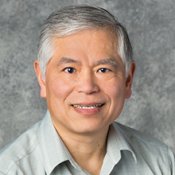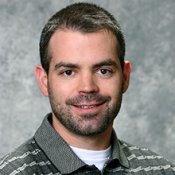
Ancient snow and ice from the coldest places on Earth can provide insight into our past, current and future climate. Jihong Cole-Dai, a professor in the Department of Chemistry and Biochemistry at South Dakota State University, has traveled to the coldest and most remote locations in the world to collect snow and ice core samples.

In Greenland—where Cole-Dai has made multiple trips—ice core samples, buried under years of constant snow accumulation, contain valuable information in the form of chemicals. These are trapped in the snow and ice and, once analyzed, can provide information about the past environment.
"We look at the chemicals in the snow samples, and then we try to understand what those chemicals tell us about the conditions of the environment on Earth," Cole-Dai said. "Essentially, we can go back in time to see how our world has evolved and how our environment changes."

In order to correctly identify these chemicals preserved in ancient snow, Cole-Dai uses a tandem mass spectrometer, an instrument located in SDSU's Core Campus Mass Spectrometry Facility.
"We have to be able to detect these chemicals at very, very low levels," Cole-Dai said. "We call those trace or ultra-trace measurements, and that's where the mass spectrometers come in. Those do an amazing job of seeing what kind of chemicals are in those ice cores, even if they are at ultra-trace levels."
Brian Logue, professor in the Department of Chemistry and Biochemistry, oversees the core campus facility as its interim coordinator. He also utilizes the mass spectrometers for his own research on cyanide.
A military veteran, Logue's academic research stems from his experience in the U.S. Army. His final two years of active service were spent as the primary investigator for the U.S. Army Medical Research Institute of Chemical Defense, located in Maryland, with a mission to provide broad countermeasures to chemical warfare agents, like cyanide.
"The main goal was to look at treatments and figure out how to treat soldiers if there were to be a chemical agent event," Logue explained.
Logue was discharged from the military in 2004 and returned to SDSU to become an assistant research professor shortly thereafter. Now, his research lab is considered the world's leading experts on the analysis of cyanide.
Some may remember cyanide as a notorious World War I chemical weapon, but cyanide can also be found in everyday life.
"The main issue is that people are exposed to cyanide through fire smoke as its usually mixed with carbon monoxide," Logue, a 1995 graduate of SDSU, said. "It's part of our biological system. We all have cyanide in our blood and our body can handle a certain amount of it, but it’s when you get exposed to a relatively large amount of it that it can be poisonous."
Logue's lab focuses primarily on the analysis side of cyanide, but it does venture, and collaborate with other top labs, on the antidote side of cyanide research.
"There are some antidotes out there, but they all have their issues," Logue said. "There's been a big push to provide better antidotes, and so we support that goal by analyzing cyanide, analyzing metabolites and drugs in the blood."
Similar to Cole-Dai, Logue uses the mass spectrometer instrument to support his research efforts. As Logue explains, most chemicals will have a different mass because they are made up of different atoms. The mass spectrometer instrument allows researchers to isolate and identify specific molecules by their mass.

While the process sounds simple—measuring the mass of a compound—it's anything but. A sample being tested might contain millions—maybe even billions—of compounds, and researchers like Logue and Cole-Dai are often looking to measure one single molecule. Preparing the samples prior to measurements is crucial to effectively using the instrument.
"It's a great tool for all sorts of analysis," Logue said. "There are tons of applications for this highly sophisticated instrument, but at its core, all you are doing is finding the mass—the weight—of a molecule or a piece of a molecule."
Accurate measurements are crucial to helping researchers identify molecules and determine their quantities. The mass spectrometers at SDSU allow for such measurements.
Outside of measuring trace chemicals in ice cores and blood samples, mass spectrometers have applications in a diverse range of research fields, including food contamination detection, pesticide residue analysis, forensics and carbon dating, among others. Developed in 1912 by J.J. Thomson, "mass specs"—as they are commonly referred to—have been utilized in countless scientific breakthroughs and are found in all top research laboratories.
SDSU currently has two mass spectrometer systems in the core campus facility, located in the Avera Health and Science building. Shared core campus facilities are crucial to research success at the university level as they relieve individual labs and departments of the burden of maintaining complete suites of sophisticated instruments, like mass spectrometers.
The facility and equipment are available to university staff and students as well as the general public for a small fee. For more information and/or questions, contact Logue.
- Contact:
- Telephone number: 605-688-6161
Republishing
You may republish SDSU News Center articles for free, online or in print. Questions? Contact us at sdsu.news@sdstate.edu or 605-688-6161.

